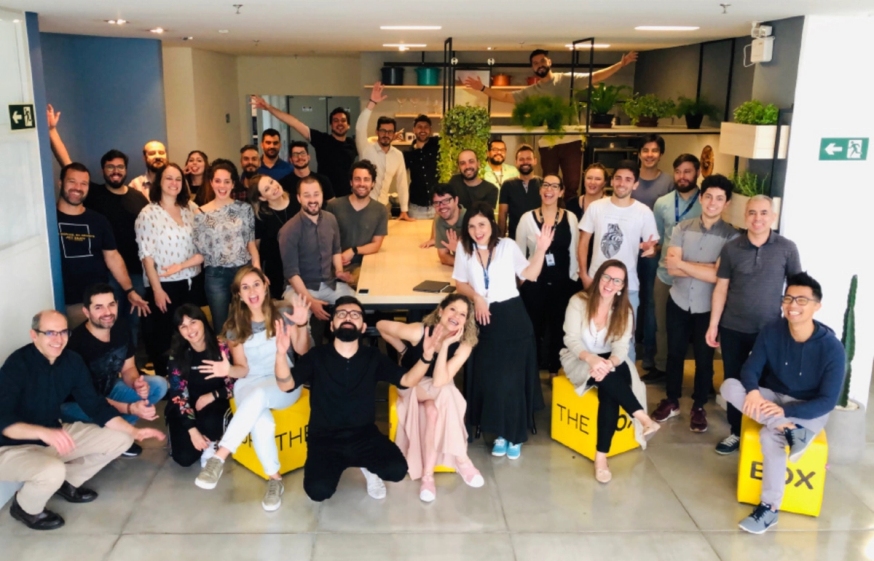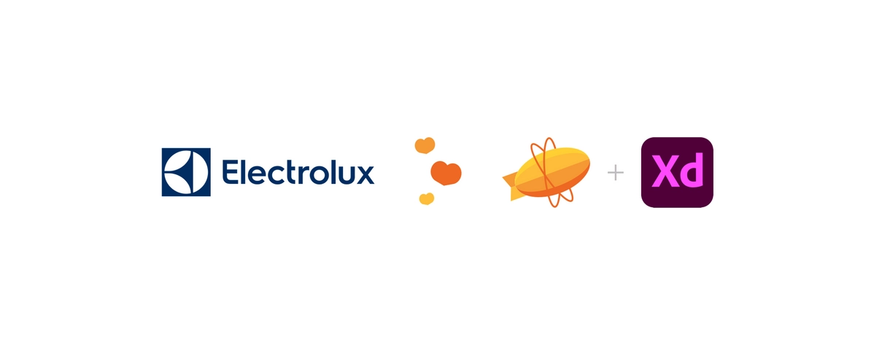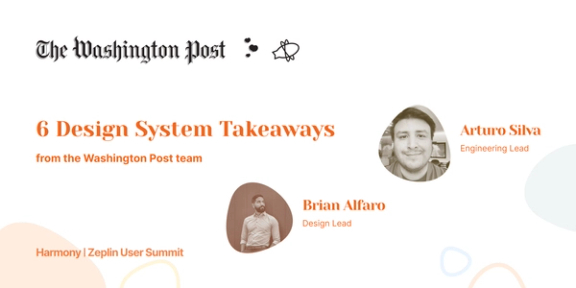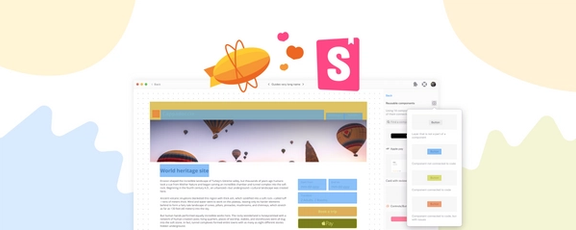Digital Experience specialist Lanna Solci joined Electrolux in early 2019 to help refine Electrolux’s processes for building digital experiences integrated with physical appliances. She recently spoke with the Zeplin crew on how her team has adopted a workflow encompassing Zeplin, Overflow and Adobe XD.
Before joining Electrolux, Lanna had been working in design for seven years but had never previously worked with physical products. Bringing a wealth of experience and a unique perspective, she helped the team transition from using traditional design tools to using a more modern approach. In this article, we will talk about the differences between these two processes and how Electrolux is now saving months of time per project by adopting these techniques.
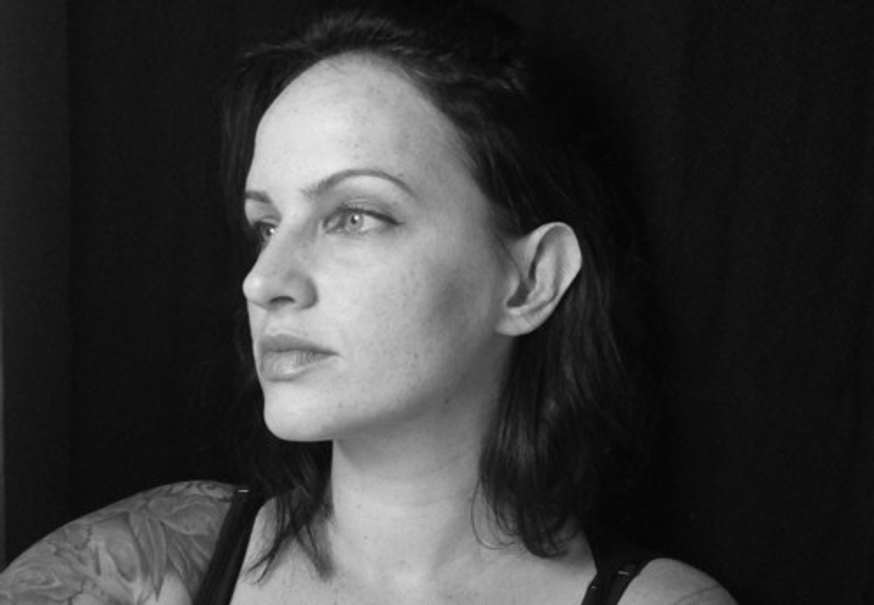
Electrolux
Electrolux is a global Swedish maker of home appliances with headquarters in Stockholm. They have over 10,000 employees and more than 500 products across their portfolio, including refrigerators, ovens, microwaves and dishwashers.
Electrolux has over 100 designers across the world who work across the entire product portfolio. Forty of these are based in Latin America, where Lanna is based. The rest can be found in Electrolux’s global offices in Stockholm and Singapore. They work with a small team of software engineers and a large team of electrical engineers sharing digital, physical and interaction projects.
“The design team at Electrolux works directly with engineers, so we have a very close relationship facilitated by 10-minute stand-ups every day and a Slack channel where we can keep up to date with ongoing projects,” Lanna told us. “Currently we don’t have a product owner but we are hoping to change this in the future. For now, we are working on these small changes to ensure that digital development at Electrolux continues to evolve and become even more efficient.”
Joining Electrolux from a start-up
Lanna joined Electrolux after forging a successful career as a User Experience designer at several global start-ups such as RELAYTO, and Visually.
“One of the most significant differences to experience when joining Electrolux was how work is coordinated. Instead of working on one task at a time, we get our projects from our managers — and are responsible for aligning expectations with engineering, marketing and business. We do ideation sessions, design wireframes, high fidelity prototypes, and set everything up for our engineers,” Lanna said.
“Joining Electrolux directly from a start-up has been a great experience, where I’ve been able to learn so much, about how to manage dozens of projects at a time. At any given moment, there are several priorities to manage, whereas, at a start-up, you have the good fortune of handling one problem at a time.”
When Lanna joined Electrolux, she was able to use her experience to help reinvent their global design process, and apply this approach to design across her team.
It was clear that the tools used across the digital and physical teams needed a re-evaluation, so she set about working to optimise the collaboration process across tools, functions, time-zones and with leadership.
Lanna took us through the process that existed when she joined and how this has morphed progressively into a collaborative and harmonious workflow.
“I was quite shocked when I joined Electrolux because it was just so different. Coming, as I do, from a digital background, everyone just instinctively knows what they have to do,” Lanna said. “But physical adds an entirely different dimension to the way teams work together.”
Life before Zeplin and Adobe XD
Before Lanna joined Electrolux in 2019, the digital team inherited their design process from the physical team. The flow involved sending large PDF documents to the development team. Because this had worked well for so long for one team, it seemed natural to take these best practices and apply them to digital development.
“When I joined Electrolux, we were using the same process to create digital products, as we were to develop physical ones. This involved using Adobe Illustrator, and linking flows with vector arrows. We then sent this flow to our engineers in a single file, and it soon became overwhelming to manage across multiple large files. Hence, we investigated a tool-set to help adapt and change our process to suit our needs, so Adobe XD and Zeplin were the first changes we made,” Lanna explained.
“Engineers would do their best to deliver something close to the PDFs they were sent, but often this would cause confusion and much back and forth across the teams. They used to complain about the file sizes because they were huge, and it was challenging to get the icons and assets. Simple tasks, like changing an icon, meant that you would have to change these in every single place in the Illustrator file. This was error-prone and time-consuming.”
“The hardest part of introducing new tools was the learning curve and the commitment required across the team to ensure that it worked for everyone, so I ran several sessions and shared best practices with the team to show how to make the transition from Illustrator to XD, and it paid off. From there, tools like Zeplin and Overflow were easy to understand, and the team took to it very naturally.”
The electrical engineering team, in particular, were the most hesitant to adopt a new process, because the systems and tools they were using had been so valuable to them in the past — so convincing them that there were better tools available definitely involved a massive leap of faith from the team, Lanna told us.
“Luckily, they leapt and have not looked back.”
“Now, thanks to the tools we have adopted, we are working agile and delivering detailed flows every two weeks. Zeplin has helped us work together. The engineering team used to view the design team as the people with the impossible tasks and the large files. Now, since adopting Adobe XD and Zeplin, we have a great relationship.”
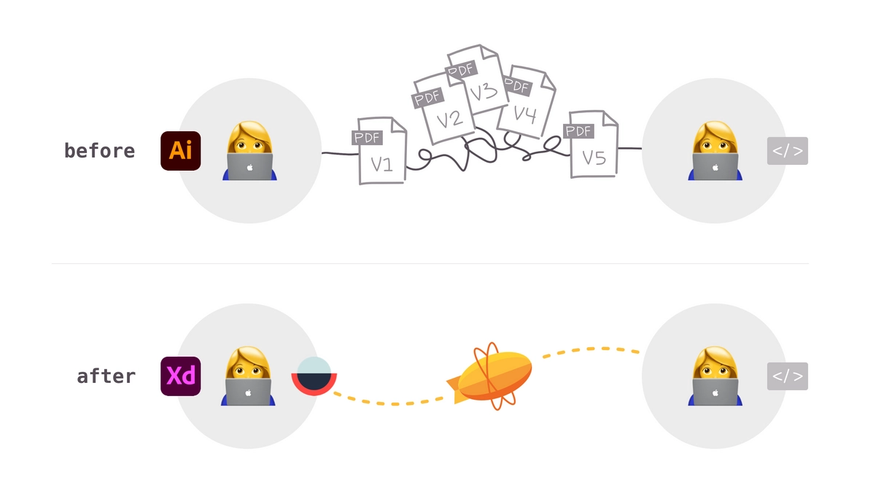
Making the decision to switch
“Deciding to switch was made easier because Illustrator and XD are both Adobe products, so we were able to build support internally by trying it out, which reduces the risks often associated with switching tools,” Lanna said.
“The integration with Zeplin was something that I was very interested in because I had been a user of Zeplin for a long time with excellent results. I made the decision early on, that if I had to make a business case for only one tool, it would be Zeplin because we needed a tool that works, and Zeplin just works.”
"We needed a tool that works, and Zeplin just works.
"
Lanna helped make a case for Zeplin internally by scheduling meetings with Design Studios to show how Zeplin works for them.
“This sold it internally, and since adopting Zeplin, we haven’t looked back.”
Life with Zeplin and Adobe XD
After the groundwork was laid with the design team and Adobe XD, Electrolux introduced the engineers to Zeplin.
“They were so happy not to receive such big files, and the collaboration features like notes and tags helped us all collaborate more efficiently than we had been. We calculated that this new process saved close to a month of time for each project because it eliminated all of the unnecessary back and forth and change requests overnight,” Lanna told us.
"We calculated that this new process saved close to a month of time for each project because it eliminated all of the unnecessary back and forth and change requests overnight.
"
Before, if there was a change request, every single link needed to be updated on the Illustrator file manually, now when there’s a change, this can be done in a matter of seconds. Much of this credit goes to the adoption of XD and Zeplin, Lanna says, which have improved the team’s processes exponentially.
“Everything across our workflow is now connected with links. In Zeplin, I can put the links to external resources on the project so everyone in my team can see everything they need to. If they have any doubts all they need to do is check the links in Overflow, we can get all of the interactions for design in one place, and they’ll know exactly what to do. This allows everyone to work in Adobe XD together.”
“At Electrolux, we have different types of engineers: electrical engineers who handle the appliances and software engineers who handle the front-end designs. By using a combination of Adobe XD, Overflow, and Zeplin, we can deliver the map of the design to our electrical engineers, and provide our prototypes and screens to our software engineers. We rely on Zeplin’s notes to collaborate across our design and engineering departments.”
All of Electrolux’s engineers rely on Zeplin to collaborate with each other, and it’s Lanna’s job to make sure everyone is aligned and knows what’s happening.
“Our global adoption of this workflow has completely revolutionised how we work together as a global team, and this has led to continuous iterations and improvements, like bringing our design system into Zeplin using Styleguides.”
“Styleguides have made a considerable impact on our team. The engineers use this to create the rules for colors and text styles. Now they can see everything together in Zeplin, which is very powerful. We are exploring connected components right now to help our engineers save time by accessing components from our codebase within designs in Zeplin,” Lanna told us.
